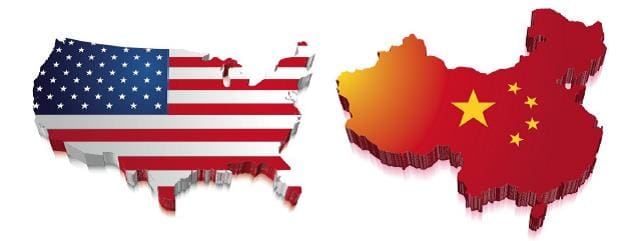
CONTINUED tariffs on Chinese woollen garment imports into the United States are contributing to subdued wool textile chain sentiment.
Australia’s auction market continued to display weakness this week, with the AWEX Eastern Market Indicator falling 26 cents to close at 1517c/kg clean.
National Council of Wool Selling Brokers of Australia executive director Chris Wilcox said there was still uncertainty about what The United States and China had agreed in negotiations to resolve the trade war between the two countries.
“There is so much uncertainty and lack of clarity about what they have agreed that I doubt we will see any impact on the wool market unfortunately.
“There seems to be a general consensus around the world that is hard to understand what they have agreed and what benefits there are,” he said.
After some initial positive reaction about agreements arising from the meeting, I have seen nothing at all that helps the wool industry.
“The 15pc additional duty on imports of wool clothing from China introduced by the US Government remains in place, adding to the cost for US clothing wholesalers and retailers,” he said in his weekly newsletter to NCWSBA members.
“This contributes to the subdued sentiment throughout the wool textile chain.”
Some normalcy returning to wool trade
Australian Wool Innovation said in its weekly market report today that the trading business situation appears to be returning to normal, with relatively regular business being available around the daily price for the past fortnight.
“Movements in the very recent period have largely been supply-driven, both on volume and wool type.”
AWI said about a third of that weakness in the Australian wool market this week was currency-driven as the Australian dollar strengthened against the US currency week-to-week.
“In US$ terms the US EMI was just 1.1pc or US12 cents lower, to see that indicator at the US1029 c/kg clean level by the end of the selling week.”
AWI said the auction room action for the past two or so weeks has seen buyers showing far more control and firm, more committed buying.
“The acceptance of current price levels appears to be widespread.
“Most companies are committed to strategizing loss-recovery plans from the hectic financial results caused by the dramatic and speedy downturn in price.”
AWI said traders again led buyers’ lists in the auction rooms.
“Merino prices for both fleece and skirtings traded 30 cents lower, crossbreds were 50 cents cheaper and cardings remained generally steady for the week.”
AWI said the global economy is showing signals of better health with Brexit and the US-China trade imbalance dispute seemingly on a much sounder footing.
“The initial retail figures from the Northern Hemisphere early autumn retail sales are still to come in, but hopes are they are good and can remain so, leading into the traditionally strong Singles day and Black Friday sales to come later in November.
“According to capital economics, retail sales in China increased by nearly 0.7pc in August of 2019 compared to July 2019,” AWI said.
“On top of that, China’s trade surplus also increased to almost US40 billion in September 2019 which is massively up from the US31 billion in the same month of last year.
“That surplus number exceeded expectations by a whopping 18pc or US6 billion,” AWI said.
AWI said exports from China still produced a 3pc drop compared to last year, but this was offset by an import reduction of over 8pc.
“For the year to date figures, the Chinese trade surplus increased to US300 billion from US220 billion in the corresponding period of the prior year.
“The above situation should be viewed as a big positive for Australian wool growers,” AWI said.
“Primarily, China accounts for importing 75pc of our annual wool clip.
“In simple terms, three out of every four dollars wool growers’ receive comes from Chinese pockets.”
More importantly though, the Chinese domestic consumer now buys upwards of 45pc of the final wool product, making China the largest consumer of wool in the world, AWI said.
About 33,000 bales are scheduled to be offered next week, with Sydney only having a one day sale due to the lack of willing sellers.
Sources: AWI, NCWSBA.

HAVE YOUR SAY